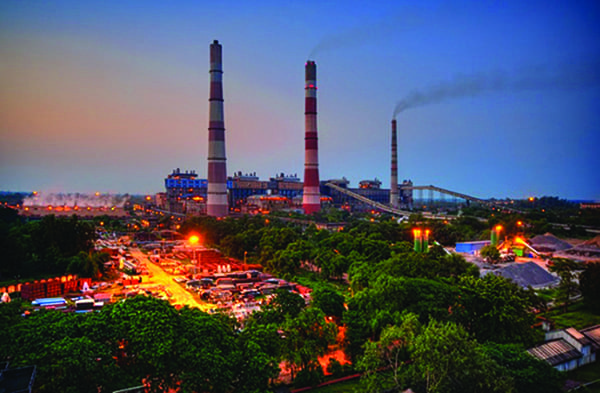India's Energy Market Overhaul—Infrastructure, Renewables, and Keeping Coal in the Mix
India wants to reform its power generation sector, including upgrades to energy infrastructure, and plans to introduce new technology to make its electricity supply more reliable and resilient. It’s part of an announced set of changes to help utilities and the country’s power markets, and could cost as much as 2.5 trillion rupees ($35 billion) over five years, according to reports published in January.
Officials recently told Indian media the initiatives would focus on infrastructure and technology upgrades of financially struggling utilities to make them more efficient and reduce losses. The government wants to enhance public-private partnerships, revise tariff structures, and do more with smart metering. It’s part of an energy overhaul in the country announced last year by Prime Minister Narendra Modi’s Bharatiya Janata Party, with a price tag of more than $1.4 trillion. Officials said the government could provide grants to power suppliers who meet certain conditions set by national lawmakers.
The new plan comes after a similar effort, launched in 2015 and designed to make the country’s retailers profitable by March 2019, did not reach its goals. The prior plan called for reducing revenue lost from theft and poor billing practices to an average of 15%; a power ministry report in October 2019 said revenue losses fell, but only dropped to about 18% through the first quarter of 2019, while net income losses for power suppliers rose about 85% year-over-year.
“India’s electrical system is in urgent need of an overhaul. India experiences frequent losses and outages, and modernizing the power grid should be a key priority of the Modi administration,” Liam Hunt, a writer and market analyst at SophisticatedInvestor.com, told POWER. “Sweeping energy reforms are needed to improve operational efficiency and connect the estimated 240 million Indians living without electricity.”
While India’s power generators have acknowledged the need to improve the electricity supply network, and move toward a more carbon-neutral economy, Modi recently said he did not favor a carbon tax, according to Reuters; the government currently taxes coal production and imports at 400 rupees ($5.61) per metric ton. Reuters reported that India’s government wants to waive the carbon tax because “the savings would improve the financial health of utilities and distribution companies and help the power producers to install pollution-curbing equipment.” There are additional concerns that the tax would bring higher electricity prices. It’s against that backdrop that the nation’s generators must decide where to earmark future investment.
Hunt told POWER that more standardization in power markets across India is needed. “This process should begin with regulatory harmonization at the federal level,” Hunt said. “Currently, there are no shared standards for open market energy trading between India’s 29 states. The retail prices of energy vary from state to state, which puts additional stress on utilities. Although Modi’s $35 billion investment is a welcome and long-overdue initiative, the administration should strongly consider opening the federal market to retail competition and leveraging tariff reforms to align electricity costs with market prices.”
The plan to upgrade power infrastructure could include the installation of about 250 million prepaid smart meters, designed to help boost revenue collection. India also is looking to add better electricity monitoring and control networks, or SCADA—supervisory control and data acquisition systems—to separate grids between rural and urban areas. Part of the plan also includes replacing existing overhead power lines with better-insulated wires in an effort to prevent electricity theft. Government reports have said power distributors lose about 20% of potential revenue for “technical and commercial” reasons, which includes power leakage from inefficient transmission infrastructure, and poor billing and collection methods. The additional investment in smart meters is expected to be supported by power retailers, and funded using the efficiency gains from the infrastructure upgrades. The country’s power ministry is working with electricity suppliers on other improvement measures, which could be partly funded by the federal government based on achieving efficiency targets.
Meanwhile, Modi’s move to eliminate the carbon tax on coal, while providing cost savings for power generators, would also cut a revenue stream for government-backed system upgrades, even as the government wants companies to install pollution controls at existing coal-fired plants. Officials from India’s Central Pollution Control Board had threatened to close plants on January 1 if the facilities had not installed equipment to cut emissions of sulfur oxides; the government said just one of 11 power generators in the New Delhi region had installed the equipment as of that date, though no action was taken to shutter plants.
Some utilities said they still were seeking direction from the central government about how equipment should be installed. The government already had extended a December 2017 deadline for plants to install emissions-reduction technology. Reuters in December reported that more than half of India’s coal-fired power plants, and 94% of the coal-fired units that had been ordered to install emissions-reduction equipment, would likely miss the deadline. State-run power generator HPGCL was said to be “pleading” with government officials to extend the emissions deadline, and other generators were pushing for another extension. The Vedanta Group, a private company with interests in several industries, including power, said it was “confident” the government “would take a considerate stand” for the situation.
 |
|
1. The India One solar power plant came online in 2017. The 1-MW plant, a demonstration project in Abu Road, Rajasthan, includes a storage component enabling a night-time power supply. It utilizes a parabolic dish design, with 770 dishes across 25 acres, and powers the Brahma Kumaris campus at Mount Abu. Source: Brahma Kumaris / Creative Commons |
Vedanta Group has announced it plans to invest heavily in solar energy, with a goal of generating at least 1 GW of solar power (Figure 1) in the next few years. The International Renewable Energy Agency last year issued a report that said India has the lowest costs for installed utility-scale solar in the world. Vedanta Chairman Anil Agarwal said the company plans increased investment in clean energy resources, and aims to significantly expand its existing portfolio of 300 MW of wind and solar energy capacity by participating in new projects offered by the government. “From 300 MW, our first goal is 1,000 MW. When we get there depends on government tenders. We are looking at a couple of years, or three years,” Agarwal told The Economic Times.
 |
|
2. India wants to increase its power generation from renewable sources, but the country wants to keep coal-fired power as part of its energy mix as demand for electricity grows. The state-run utility NTPC in September commissioned the country’s first ultrasupercritical (USC) coal-fired unit at the 1,320-MW Khargone plant in the state of Madhya Pradesh. Courtesy: NTPC |
The Indian government as part of the infrastructure upgrade plan said it wants to decrease dependence on thermal generation, while acknowledging coal will continue to play a role (Figure 2). Officials have said the nation’s installed generation capacity of about 366 GW is expected to rise to nearly 620 GW in 2025, with about half of that capacity coming from coal, natural gas, lignite, and diesel-fired power plants. Those sources today account for about 63% of generation capacity.
Government data shows that India’s coal-fired power generation has fallen year-over-year each month beginning in August 2019. Generation from renewable resources is rising, and the government’s plan includes support for solar and wind, among other technologies, with installed renewable generation capacity (including hydropower) expected to make up 39% of the nation’s energy mix by 2025, up from 23% today.
The plan also includes tariff reform; state-owned power companies have said they are operating at a loss because they cannot raise electricity tariffs. Even with the move toward more renewable power, though, the government is trying to attract more investment in its coal mines, with planned auctions for coal blocks for commercial mining. The country’s Ministry of Coal in early January said it plans to issue Notice Inviting Tender, or NIT, documents before the end of the current financial year to begin the process of commercial coal mining auctions. The country’s coal ministry said it has identified as many as 40 coal blocks with an estimated production capacity of 150 million tons annually that could be included in the auctions. The ministry said the blocks already have been partly explored, and could begin production within the next five years. The Indian government has amended the country’s mining laws to encourage private investment in the coal mining sector.
—Darrell Proctor is a POWER associate editor (@DarrellProctor1, @POWERmagazine).